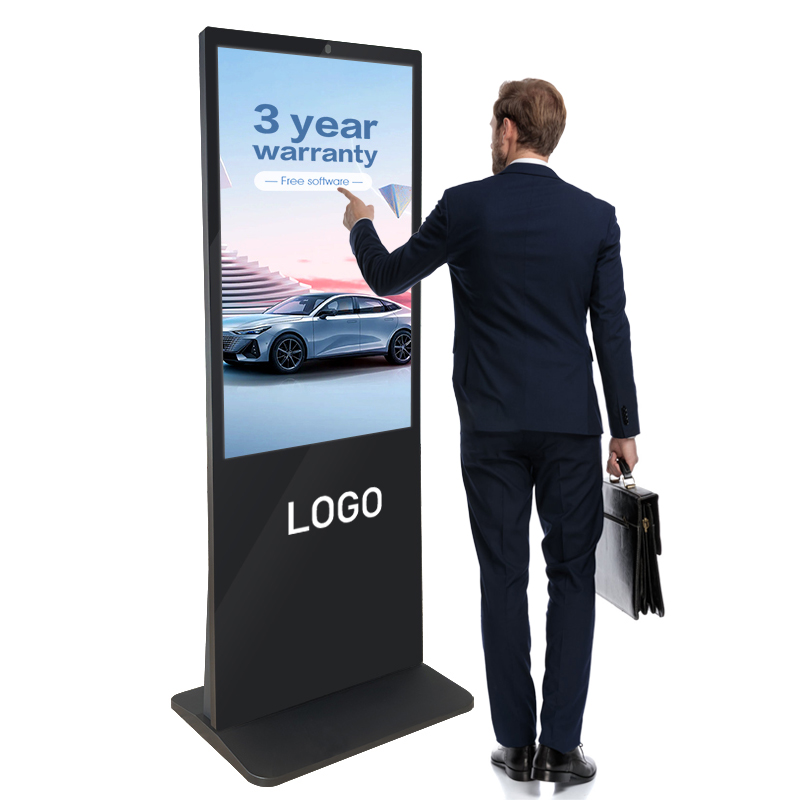
Views: 0 Author: Site Editor Publish Time: 2025-09-12 Origin: Site
In the rapidly evolving world of digital communication, Smart Digital Signage has emerged as a revolutionary tool for businesses aiming to enhance their marketing strategies. This technology integrates traditional signage with digital advancements, offering dynamic content delivery and interactive features that captivate audiences. As businesses strive to maintain a competitive edge, understanding the multifaceted benefits of smart digital signage becomes crucial. This article delves into the myriad advantages of this technology, exploring its impact on various industries and its potential to transform customer engagement.

One of the most significant benefits of smart digital signage is its ability to enhance customer engagement. Unlike static displays, digital signage can be updated in real-time, allowing businesses to tailor content to specific audiences and occasions. For instance, a retail store can display promotions and discounts that are relevant to the current season or time of day. This level of customization not only captures the attention of passersby but also encourages interaction, leading to increased foot traffic and sales.
Moreover, smart digital signage can incorporate interactive elements such as touchscreens, QR codes, and social media integration. These features enable customers to engage directly with the content, providing a more immersive experience. For example, a restaurant could use a digital menu board that allows customers to browse dishes, view nutritional information, and even place orders directly from the screen. This interactivity not only enhances the customer experience but also streamlines operations, reducing wait times and improving service efficiency.
Smart digital signage offers a cost-effective marketing solution for businesses of all sizes. Traditional print advertising can be expensive and time-consuming, requiring frequent updates and replacements. In contrast, digital signage allows for instant content updates, reducing the need for physical materials and labor. This not only lowers operational costs but also minimizes waste, aligning with sustainable business practices.
Additionally, digital signage can serve multiple purposes, further enhancing its cost-effectiveness. A single display can showcase advertisements, provide wayfinding assistance, and deliver real-time information such as weather updates or news feeds. This versatility maximizes the return on investment, as businesses can leverage a single platform for various communication needs.
Another advantage of smart digital signage is its ability to provide data-driven insights. By integrating with analytics software, businesses can track customer interactions and gather valuable data on audience behavior. This information can be used to refine marketing strategies, optimize content delivery, and improve overall customer experience.
For example, a retail store could analyze which products are most frequently viewed or purchased after being featured on digital signage. This data can inform inventory decisions, promotional strategies, and even store layout adjustments. By leveraging these insights, businesses can make informed decisions that drive growth and enhance customer satisfaction.
Smart digital signage plays a crucial role in improving brand awareness. With its dynamic and visually appealing content, digital signage captures attention and leaves a lasting impression on viewers. This is particularly important in crowded environments such as shopping malls, airports, and city centers, where businesses compete for consumer attention.
By consistently delivering engaging content, businesses can reinforce their brand message and establish a strong presence in the market. Digital signage also allows for creative storytelling, enabling brands to convey their values and mission in a compelling way. This not only attracts new customers but also fosters loyalty among existing ones.
The flexibility and scalability of smart digital signage make it an ideal solution for businesses looking to grow and adapt to changing market conditions. Digital signage systems can be easily expanded or modified to accommodate new locations, products, or services. This scalability ensures that businesses can continue to leverage the technology as they evolve.
Furthermore, digital signage can be customized to meet the specific needs of different industries. For instance, a healthcare facility might use digital signage to display patient information and health tips, while a corporate office could use it for internal communications and employee training. This adaptability makes digital signage a versatile tool that can support a wide range of business objectives.
In conclusion, Smart Digital Signage offers numerous benefits that can significantly enhance a business's marketing efforts and overall operations. From improving customer engagement and brand awareness to providing data-driven insights and cost-effective solutions, digital signage is a powerful tool that can drive growth and success. As technology continues to advance, businesses that embrace smart digital signage will be well-positioned to thrive in an increasingly competitive landscape.
